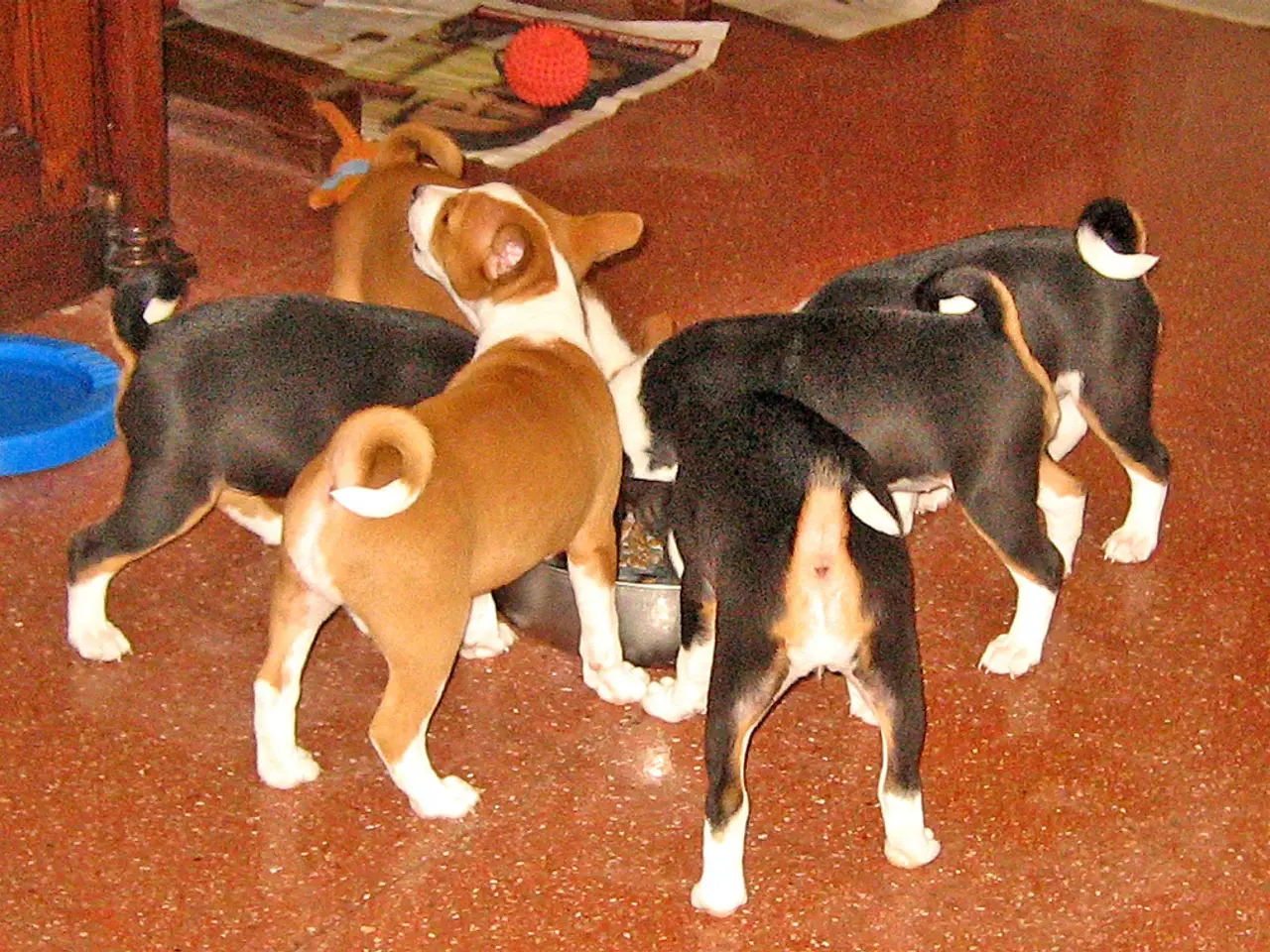Dogs and the Risk of Salmonella Infection
Dogs, like their owners, can fall ill to Salmonella, a bacterium that often causes food poisoning in humans. Here's a guide to understanding the symptoms, treatment, and prevention of Salmonella in dogs.
Symptoms
When a dog is infected with Salmonella, it may exhibit symptoms such as high fever, vomiting, and diarrhea (which can be bloody). Other signs may include lethargy and abdominal pain. These symptoms typically appear 6 to 72 hours after exposure.
Treatment
Prompt veterinary care is crucial when dealing with a Salmonella infection in dogs. The veterinarian will perform a physical exam, looking for signs such as fever, dehydration, abdominal pain, or an elevated heart rate. They may collect a fecal sample for bacterial culture to look for Salmonella, although this test has limitations and may require multiple samples.
If Salmonella is detected, the veterinarian will prescribe antibiotics targeting Salmonella, based on culture and sensitivity testing. Supportive care, including intravenous fluids to prevent dehydration, and anti-nausea medications, may also be necessary. In severe cases, hospitalization might be required for close monitoring.
Prevention
Preventing Salmonella in dogs involves a few key steps. First, avoid feeding raw meat to your dog. Second, secure your garbage and trash to prevent your dog from scavenging. Third, maintain a consistent, high-quality diet for your dog.
Good hygiene is also essential. Sterilize contaminated items with a bleach solution (1:10 ratio), wash bedding, and wash your hands after contact with the dog or its environment.
By following these steps, you can help manage and reduce the risk of Salmonella infection in dogs while protecting other pets and humans in the household from the zoonotic potential of the bacteria.
Additional Precautions
It's also important to note that a fecal parasite exam cannot detect Salmonella but is used to rule out other intestinal parasites in dogs. The most effective way to help prevent dogs from developing Salmonella is to ensure that they do not have access to raw meat and to limit their access to the stool of other animals.
By understanding the symptoms, treatment, and prevention methods for Salmonella in dogs, you can take the necessary steps to keep your pet healthy and happy. If you suspect your dog has Salmonella, consult your veterinarian immediately.
The guide emphasizes the significance of maintaining a high-quality diet that includes nutrition for dogs to reduce the risk of Salmonella infection. Good hygiene practices, such as heating contaminated items with a bleach solution, washing bedding, and practicing hand hygiene, contribute to the prevention of Salmonella.




